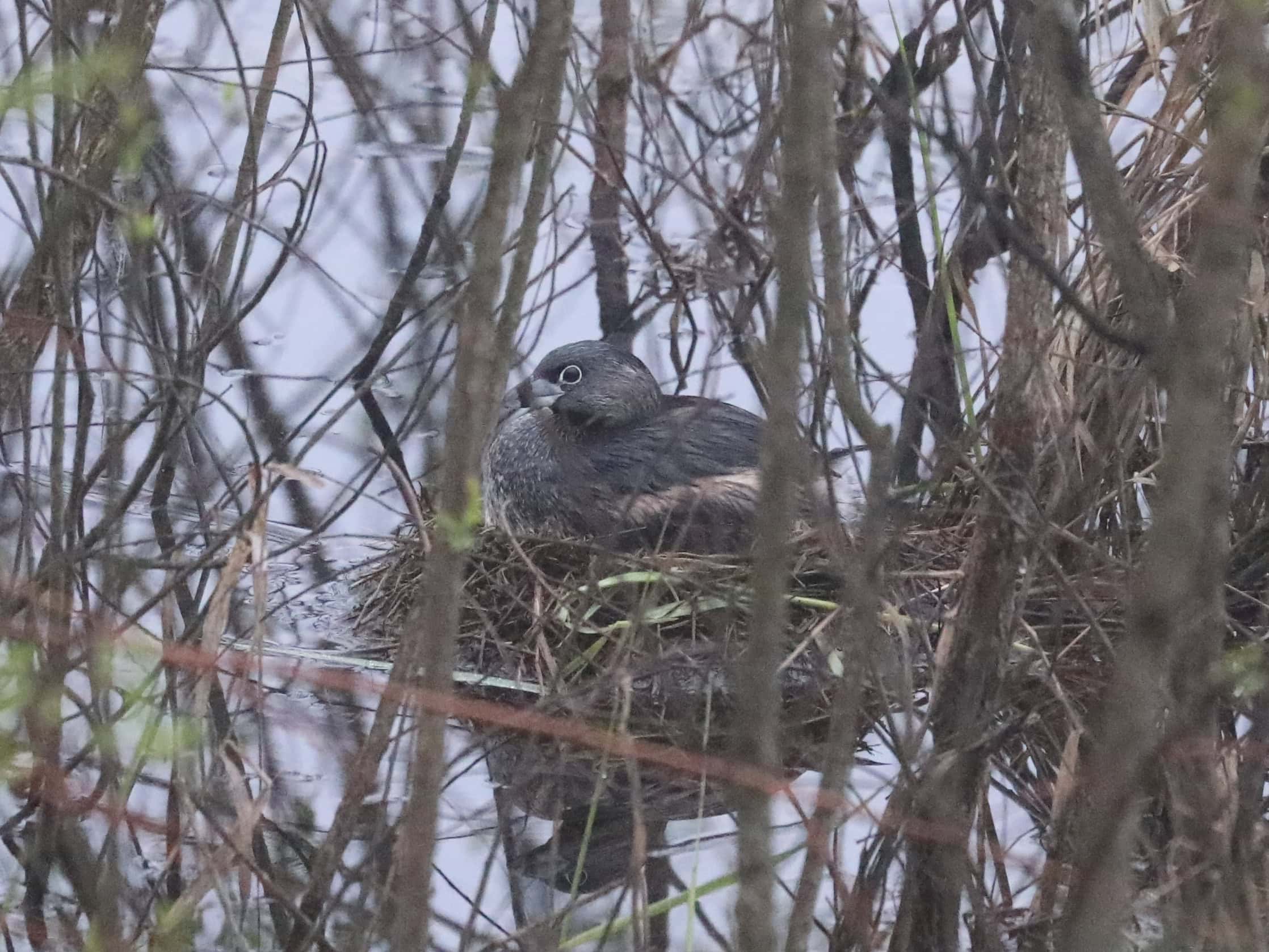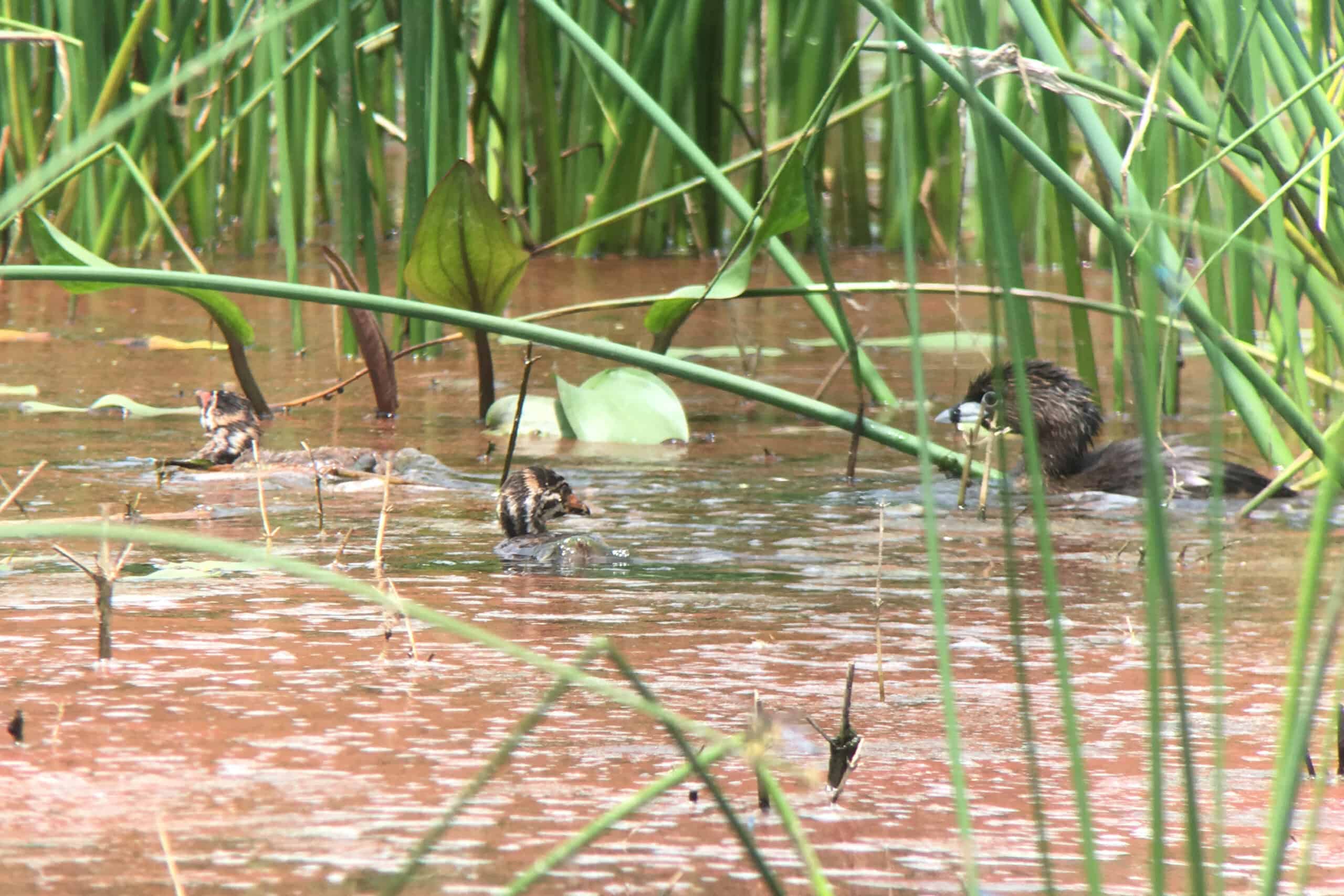Our Weirdest Bird?: Pied-billed Grebe
I found a grebe nest a few weeks ago, which was a first for me, and it reminded me of how weird grebes are. The most common grebe in Pennsylvania is the Pied-billed Grebe (“pied” is an old word meaning black-and-white). The first thing you might notice in the photo above is how wet it is around the grebe’s nest, and that’s because they build floating nests. A pair of grebes can work together and build their floating nest in just a few days.
Like the floating nest, a lot of a grebe’s weirdness comes from its adaptation to an aquatic life. Grebes’ legs are located so far back on their bodies that they’re unable to walk or stand upright. The positioning of their legs allows them to dive under water and propel themselves quickly through the water to capture prey like fish, insects, and crayfish. They can move extra fast due to their lobed toes – each toe is wide like a little paddle, unlike duck toes that are connected with webbing. Each toe folds into a narrow, bladelike shape when moving forward, so the grebe doesn’t get slowed down as it resets for another thrust of its legs.
Perhaps the weirdest fact about grebes is who their relatives are. Recent studies have shown that the birds most closely related to grebes are the flamingos!
Our Weirdest Bird?: Pied-billed Grebe
I found a grebe nest a few weeks ago, which was a first for me, and it reminded me of how weird grebes are. The most common grebe in Pennsylvania is the Pied-billed Grebe (“pied” is an old word meaning black-and-white). The first thing you might notice in the photo above is how wet it is around the grebe’s nest, and that’s because they build floating nests. A pair of grebes can work together and build their floating nest in just a few days.
Like the floating nest, a lot of a grebe’s weirdness comes from its adaptation to an aquatic life. Grebes’ legs are located so far back on their bodies that they’re unable to walk or stand upright. The positioning of their legs allows them to dive under water and propel themselves quickly through the water to capture prey like fish, insects, and crayfish. They can move extra fast due to their lobed toes – each toe is wide like a little paddle, unlike duck toes that are connected with webbing. Each toe folds into a narrow, bladelike shape when moving forward, so the grebe doesn’t get slowed down as it resets for another thrust of its legs.
Perhaps the weirdest fact about grebes is who their relatives are. Recent studies have shown that the birds most closely related to grebes are the flamingos!
About The Author
Dan Hinnebusch is the Ornithologist for Wild Birds Unlimited. Click to learn more.





